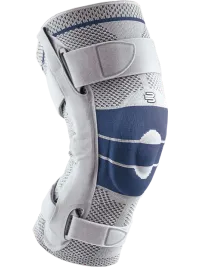Where did you first research joint denervation?
I have been aware of the theoretical benefits of joint denervation for 2 years. In the fall of 2022, I went with a team of hand specialists from OrthoSouth on a trip to Boston to attend an international Hand Society meeting to take a closer look. Interestingly, the procedure has been around for a long time, but only recently gained greater attention among hand surgeons internationally.
Could you explain in lay terms what this procedure involves?
A great way to think about it is to consider how someone senses pain. In simplified terms, for someone to perceive pain in their arthritic thumb, it is because they have a nerve connected from their thumb to their brain that "tells" them that it hurts. A denervation procedure simply involves unplugging the pain fiber from the thumb, thereby removing the communication between the pain source and the brain.
Wouldn't that "unplugging" cause the patient to lose sensation or motor function?
In a word, no. In this case, the surgeon only "unplugs" the pain fiber connected to the joint. This fiber is a really small branch off of a larger sensory or motor nerve that remains protected during the case. The patient will not lose any sensation or use of their hand. They would only lose the pain!
What happens to the arthritis?
Nothing. The joint is untouched.
Does the arthritis get worse?
I suppose the joint could continue to lose cartilage over time, but the patient wouldn't feel the effects of this because the joint has been denervated. In all fairness, though, we don't have long-term data for this procedure to determine if patients remain pain-free.
What excites you the most about joint denervation?
Our results at the Hand Center at OrthoSouth are consistent with early results in the literature and quite promising. Traditional joint arthroplasty in the hand has a very long and successful record for good results, but the recovery is on average 3-6 months. In contrast, joint denervation has, in some reports, reduced a patient's recovery to 3-6 weeks. Moreover, in the patient who doesn't get the desired pain relief from the procedure, no bridges have been burned. The surgeon can always go back and perform a joint replacement at a later time.
What patients qualify for this procedure?
Any patient who has functionally-limiting arthritis in the wrist, basal joint (base of the thumb), or PIP joint (middle knuckle of the finger) would qualify.
What is the main thing you want patients to know about joint denervation?
First of all, I want patients who suffer from arthritis pain in their hands and wrists to know that there is a host of conservative treatments that can be very helpful. In the scenario where conservative treatment fails, a joint denervation is a great option that reduces pain and allows for a fast recovery. I think this procedure is going to be a game-changer for patients with functionally-limiting pain in their hands, and proud to say that the Hand Center of OrthoSouth is once again at the forefront of these new and exciting developments.

Daniel Fletcher, MD is one of 5 fellowship-trained hand surgeons at the Hand Center of OrthoSouth, the largest group of hand specialists in the Mid-South. He and his team are committed to improving function in patients with hand, wrist, and elbow problems.

